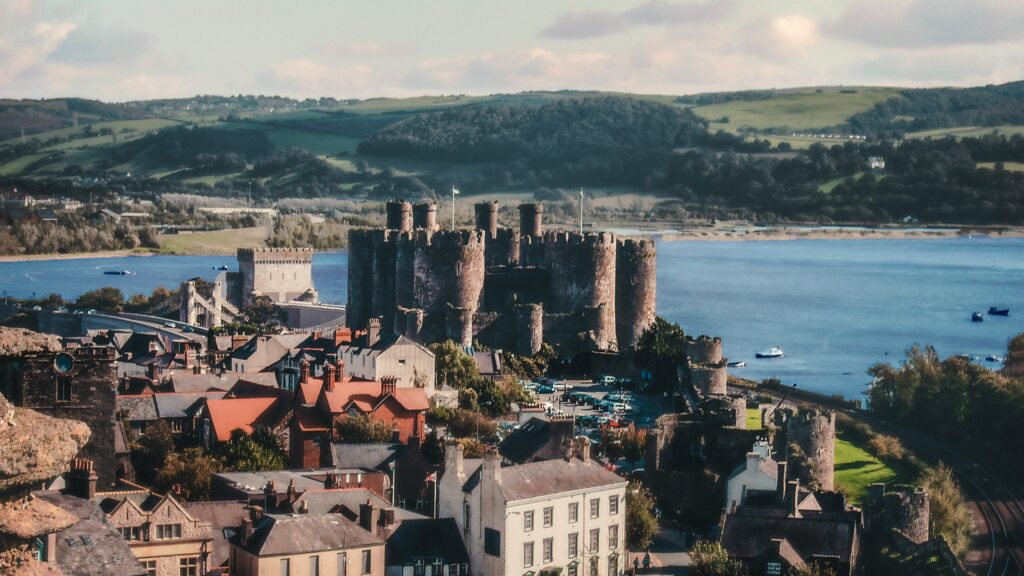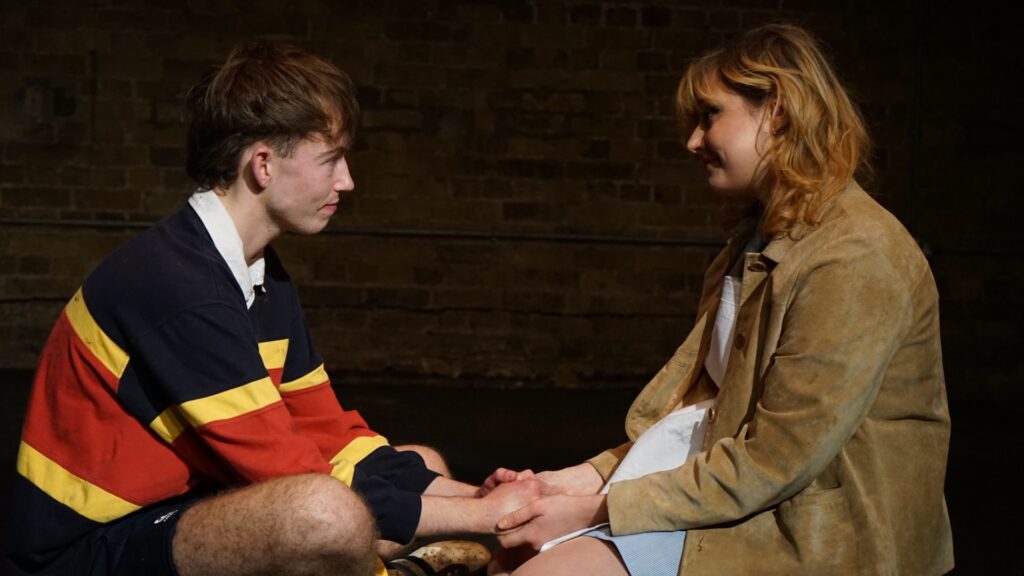Sean Davies marks this date as significant for the Welsh calendar because of events 1,000 years ago
The 5 August is a little-heralded date in the Welsh calendar, but it marks the anniversary of the death of the man who can be called the country’s greatest leader. Gruffydd ap Llywelyn was the only person to unite and rule all the lands that comprise modern Wales, imposing a vision of nation and identity that gave his kingdom a short-lived but unique position in the wider British and European world. Gruffydd’s obscurity as a historical figure speaks volumes about our country’s lack of awareness of its past, demonstrating how ill prepared we are to make the most of our cultural heritage.
The great king was born 1,000 years ago. Details of his early years are hazy, although some evocative folk tales survive, bringing to mind the stories that grew around King Alfred and burnt cakes, or Robert Bruce and persistent spiders. There are also tales of a more bloody nature. “I kill no-one, but I blunt the horns of Wales, that they may not hurt their mother,” is one quote attributed to Gruffydd. The first historical reference to him comes in 1039 when he emerged as king of Gwynedd and Powys, succeeding Iago who had been slain in unexplained circumstances. In the same year Gruffydd crushed an Anglo-Saxon army at Rhyd-y-groes near Welshpool, before marching across Plynlimon to begin the conquest of south-west Wales (Deheubarth).
Powys and Gwynedd would not waiver in their support of Gruffydd until his final days. However, there was little enthusiasm for northern rule in Deheubarth. The local king, Hywel ab Edwin, put up a doughty defence and was able to use the region’s close ties with Ireland to bring Viking allies to his aid. In 1044 Hywel led a large Viking fleet into the mouth of the Tywi:
“And Gruffydd ap Llywelyn encountered him; and there was a mighty battle and many of the host of the foreigners and of his own host were slain at the mouth of the River Tywi. And there Hywel was slain and Gruffydd prevailed.”
Gruffydd was already in a position of power that was arguably unprecedented for any Welsh king, but this in itself created problems. Local nobility throughout Wales remained proudly independent and conscious of their own prerogatives and claims to dominion, with Dyfed and Ystrad Tywi particular hotbeds of unrest. They turned to a former ally of the king’s for support, the ruler of south-east Wales, Gruffydd ap Rhydderch. Regional interests and loyalties troubled Gruffudd ap Llywelyn, but he would prove the master of both local and national politics. The king took advantage of Anglo-Saxon disunity to ally with one of the most powerful earls in England, Ælfgar of Mercia. He also exploited splits between Glamorgan and Gwent, moves that would see him bring south-east Wales into a wider kingdom of Wales for the only time in the country’s history.
In 1055 Gruffydd gathered a huge army and marched south to a planned rendezvous with Ælfgar and a Viking fleet, somewhere in the region of Portskewett. The pincer movement was too much for Gruffudd ap Rhydderch to resist, and the southern king was killed by his northern namesake.
The allied force next turned its attention to the English border. The Viking fleet sailed up the Wye with Gruffydd’s army marching alongside. Throughout his reign Gruffydd had followed an expansionist policy on his eastern border, looking to reverse centuries of Anglo-Saxon conquest and restore the Welsh language, law, religion and custom. He crushed an Anglo-Norman defending army outside Hereford, then burnt the town and cathedral. When peace was made between Gruffydd and King Edward the Confessor in 1056, Welsh conquests along the entire length of the border were officially recognised.
Gruffydd had forged a kingdom of ‘greater Wales’ and his rule would mark him out as much more than a successful warlord. His administration was based on a series of courts, known as maerdrefi. Rhuddlan was a major base of his, while we can also connect Gruffydd with sites such as Aberffraw, Caernarfon, Aberystwyth, Carew, Carmarthen, Talgarth, Caerleon and Portskewett. A strong naval presence was vital to his lines of communication, while close connections with the major churches of Wales helped Gruffudd build a professional administration. The king’s wealth impressed even Anglo-Saxon observers, while his reign coincides with a flourishing cultural scene.
So why did it all fall apart?
The security of Gruffydd’s ‘greater Wales’ depended on his alliance with Mercia, but in 1061-2 the deaths of Ælfgar and his eldest son left a leadership vacuum in the earldom. Harold Godwinesson seized on the opportunity to break the 1056 peace deal, launching a military strike and diplomatic offensive against the Welsh king. The nobles of Gwent and Deheubarth quickly went over to Harold, before a bitter campaign forced Gruffydd back to the wilds of Snowdonia. On 5 August, 1063, he was treacherously murdered by his own men – the forebears of the princes of Wales – and his head was delivered to the English.
Harold’s victory ensured that he would succeed to the English throne, an event that led to the end of the Anglo-Saxon age, the arrival of the Normans and the redrawing of the British political landscape. Had he not destroyed Gruffydd’s Wales, the country’s constitutional position would have been akin to that of the emerging kingdom of Scotland. The influence that this would have had on Welsh self confidence and sense of nationhood are incalculable.






Trueni mawr! Sean – The story of Gruffudd ap Llywelyn must be taught to Welsh children in all corners of our country, and it would do no harm for it to become common knowledge amongst Welsh adults either! We should elevate him to the status of a ‘founding father’, a Thomas Jefferson from the 11th Century and a forerunner to William Wallace and Owain Glyndwr. For far too long we have allowed English historians and misguided anglophiles amongst the Welsh to propagate the histories of Harolds, Edwards and various Charlies under the banner of ‘British History’ as if it were our own national story. The consequences of this destructive psychological warfare are evident today, and we must fight back – you’ve hit the nail on the head with your last sentence.
Congratulations on the publication of your book, Sean – Gruffydd’s life seems to be sadly neglected when compared with the later princes who dominated the Welsh scene, so I took the chance to snap it up at the Eisteddfod. Although I enjoyed the BBC’s Story of Wales immensely, I was disappointed that they chose to omit both Gruffydd ap Llywelyn and Llywelyn ap Iorwerth – the two men who, it seems to me, came closest to forging a united Welsh state.
Thanks Neilyn / Rhys, we do think that it’s the great untold story of Welsh history. And diolch yn fawr iawn for buying the book!
Great. At last a biography of a King other than Llywelyn ap Gruffudd and Owain Glyndwr. The walls of Jericho are down. Now we have seen that it is possible to have a Welsh history of Wales published. Therefore it would be natural for me to make a wish list: As mentioned in the Last King of Wales – a life of Meredudd ab Owain, the life of Rhodri the Great, Hywel Dda, Bleddyn ap Cynfyn, Owain Gwynedd, and a fuller biography of Llywelyn the Great than as yet published. Details of the periods of anarchy – such as the aftermath of the Norman conquest of Wales 1070-1136, the conflicts following the death of Owain Gwynedd, the death of the Lord Rhys and particularly the struggles after Llywelyn ap Gruffudd’s death in 1282. Well done both authors and publisher.
I am so glad I came across this posting! I am a direct descendant of Gruffydd’s and was just online Googling info on him. I really love finding historical information like this on my ancestors. Your book is now a “must have” for me!
Nice article, but that’s the tomb of Gruffydd ap Llywelyn FAWR…Easy mistake to make, but apart from an abstract painting by Ivor Davies for the S4C series “Tywysogion”, there are no other pictures ancient or modern of King Gruffydd anywhere on the internet…
Hi Philip, thanks for the comment. I would point out that I had nothing to do with the image selection for the article (nor with the decision to change the spelling from Gruffudd to ‘Gruffydd’!).
I was aware of the Ivor Davies painting (that can be found with a Google image search). I think that the lack of any other pictorial representation of Gruffudd further illustrates the point of how unknown/ignored he has been.
The book itself does contain the earliest known attempt to produce an image of Gruffudd, the woodcut from David Powel’s ‘Historie’ (1584). That image, of course, bears absolutely no resemblance to the real Gruffudd! John Edward Lloyd traced the history of Powel’s woodcuts in fascinating detail in an Archaeologia Cambrensis article, now available online at http://welshjournals.llgc.org.uk/browse/viewpage/llgc-id:1277425/llgc-id:1277990/llgc-id:1278021/getText
Please send me details of the Biographies of’The Last King of Wales-Gruffudd ap Llwelyn as well as Owain Glynn dwr. I would prefer ‘scholarly’ tones as opposed to popularist works.
I just was made aware that he was my 29th great grandfather. Thank you for this posting and I will be ordering your book to learn more about my amazing family history. Again, thank you for doing this. Truly amazing that I can learn about him like this.
Heard the discussion at Hay two years ago. The book is most informative and a reminder that Welsh princes played a key role in English history at this period. Particularly interesting was the connection made between Gruffydd and the Norman Conquest. Speculation in history is not particularly useful, but what if the Welsh king had survived until 1066 and linked with Edwin and Morcar who certainly were no friends of King Harold. The fascinating history of the Welsh/English border was covered clearly.
If Micheal and Sean do talks to border history societies how can we contact them?
Contact details for Sean and Michael would be of interest to our Herefordshire border history society. Thanks, Bob Davies
Sir, do you know who his children were? Is he any relation to Gruffydd ap Nicholas, grandfather of Rhys ap Thomas? Thanks for any information.